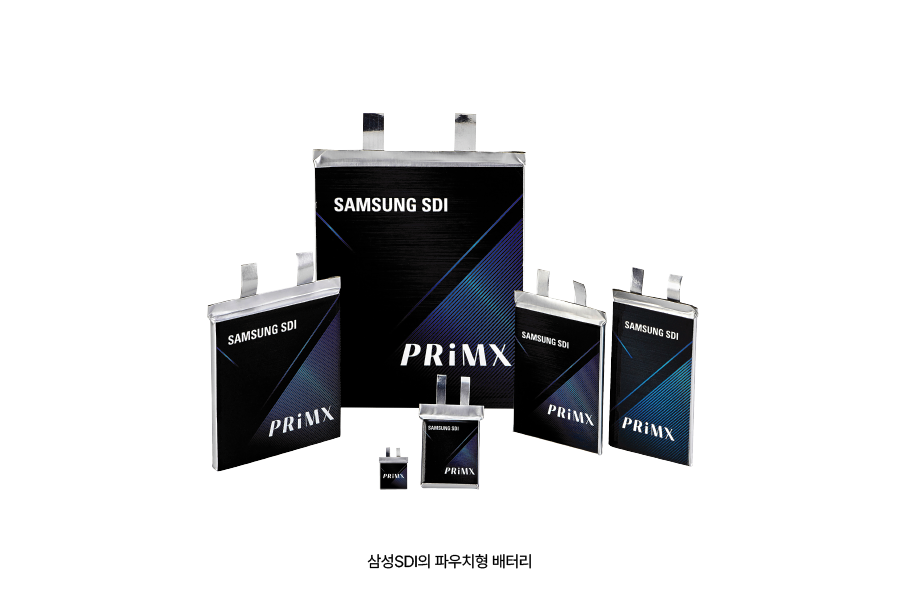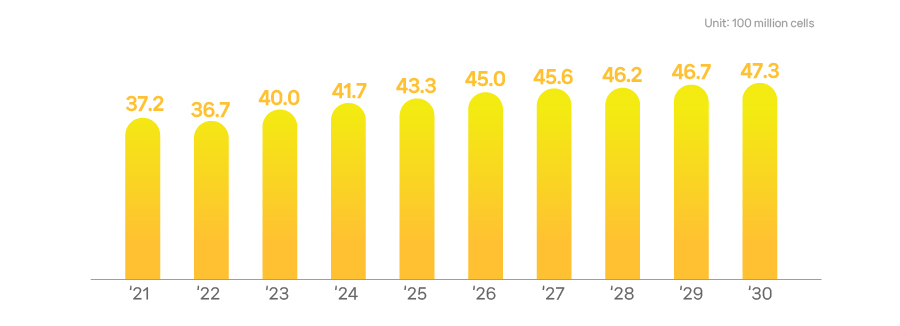Technology & Products
[Battery101] Pouch Batteries Come in Different Sizes and Shapes
2024.08.02
|
101[wʌ́nouwʌ́n] means basic knowledge of a topic or collection of introductory materials to a topic. Our Battery 101 series talks about all things battery: the history, technical aspects (basic principles and mechanisms), industrial aspects (IT, electric vehicles, ESS, etc.), and next-generation technologies that SAMSUNG SDI will innovate while opening up its future. Batteries have infinite potentials that exceeds our wildest imagination. Through Batteries 101 series, you will have a chance to see the entire spectrum of the battery's possibilities and to conjure SAMSUNG SDI’s pivotal role in it. |
Lightweight and slim
How many smart devices do you use? People nowadays use at least a couple of smart devices that enrich their daily lives: smartphones, tablet computers, laptops, and wearables. Naturally, the market for pouch batteries that power those applications is growing steadily.

[Pouch batteries of SAMSUNG SDI]
One of the top advantages of pouch batteries is they are easy to make due to their shape versatility. The market size for pouch batteries in the past was much smaller than that of cylindrical or prismatic batteries because the use was limited to premium laptops and tablet computers. B3, a market research company, found that the share of pouch batteries was only 9% in the entire small battery market in 2002.
Introduced in the early 1990s, pouch batteries were called lithium-ion polymer batteries (LiPBs) initially. LiPBs were manufactured by laminating polymer electrolytes, which served as both a separator and an electrolyte here, between the cathode and anode. Studies on LiPBs were actively conducted during the 1990s as people saw the potential: they demonstrated excellent performance in an energy density compared to the lithium-ion battery while reducing the manufacturing costs. However, LiPBs failed to survive in the competition as no one succeeded in developing polymer electrolytes with comparable performance.
Then, the trend shifted towards lithium-ion batteries, and the pouch battery market underwent a huge change in 2007. A new application, smartphones, emerged. Smartphones quickly replaced the existing market for feature phones with bigger display and thinner width. This was all possible thanks to pouch batteries that can effortlessly change their shape.
A hidden master of the small battery market
The main characteristics of pouch batteries are that they are lightweight and slim, which is their greatest edge for applications that are sensitive to design trends such as smartphones. Consumers, too, continue to express their desire for thinner and lighter gadgets to carry with them every day. This is also why popular IT devices such as smartphones, laptops, and tablet computers are powered by pouch batteries.
With increasing remote working and online education, the demand for IT devices has increased greatly, stoking the growth of the pouch battery market. A market research company SNE Research projects that the pouch battery market will grow by 29% with 4.73 billion cells in 2030 from 3.67 billion cells in 2022.

[The growth of the small pouch battery market worldwide]
There are two main methods of manufacturing pouch batteries: the winding process and the stacking process. The winding process incorporates a jelly roll design that rolls up the cathode, anode, and separator all together. The stacking process, on the other hand, involves piling of the cathode, anode, and separator one by one. SAMSUNG SDI utilizes both manufacturing methods to supply batteries that satisfy diverse market needs.
